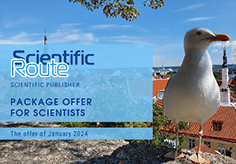Developing a user-oriented approach to selection of geospatial data based on fuzzy logic
DOI:
https://doi.org/10.15587/1729-4061.2016.75514Keywords:
geo-information systems, information provision, geo-spatial data, quality evaluation, fuzzy logicAbstract
The work considers the approach to selection of geospatial data, oriented towards the user's requirements. The methods and models are presented for evaluation of quality and selection of the sets of spatial data with the aid of fuzzy logic.
The model of evaluation of the quality of spatial data was designed, which fully agrees with the elements of quality of a series of the international standards ISO 19157. The model makes it possible to comprehensively consider the requirements of user in the selection of spatial data for the formation of information provision of GIS–applications. Within the framework of the model, the methods of selection of spatial data according to the indicators of thematic and positioning accuracy were developed. The method of thematic accuracy is realized under conditions of the lack of the reference cartographic material. The method of selection of spatial data according to the indicator of positioning accuracy provides for the possibility of correcting an error of the planned and high-altitude accuracy and presents the result in the form of expert recommendations. Furthermore, this approach is realized in the prototype of a system, which makes it possible for the users to consider their requirements in conjunction with the indicators of quality of geospatial data. This system allows forming information provision of GIS-applications, and its verification in several projects of different thematics demonstrated positive results of taking onto account the needs of users at the stage of selecting the data.
References
- Wilson, M. W. (2015). On the criticality of mapping practices: Geodesign as critical GIS? Landscape and Urban Planning, 142, 226–234. doi: 10.1016/j.landurbplan.2013.12.017
- Li, S., Dragicevic, S., Castro, F. A., Sester, M., Winter, S., Coltekin, A. et. al. (2016). Geospatial big data handling theory and methods: A review and research challenges. ISPRS Journal of Photogrammetry and Remote Sensing, 115, 119–133. doi: 10.1016/j.isprsjprs.2015.10.012
- SOU 742–33739540 0010:2010. Kompleks standartіv. Baza topografіchnih danih. Zagal'nі vimogi (2010). Kyiv: Mіnprirodi Ukrainy, 27.
- Vymogy do struktury, zmistu ta formatu oformlennja rezul'tativ robit iz zemleustroju v elektronnomu vygljadi (obminnogo fajlu): nakaz Derzh. komitetu Ukrai'ny iz zemel'nyh resursiv № 573 vid 02.11.2009 (2010). Oficijnyj visnyk Ukrai'ny, 12.
- ISO/TS 19104:2008. Geographic information – Terminology (2008). Switzerland: ISO, 102. Available at: http://www.iso.org/iso/iso_catalogue/catalogue_tc/catalogue_detail.htm?csnumber=45020
- ISO 19115:2014. Geographic information – Metadata. Part 1: Fundamentals (2014). Switzerland: ISO, 167. Available at: https://www.iso.org/obp/ui/#iso:std:iso:19115:-1:ed-1:v1:en
- ISO 19157:2013. Geographic information – Data quality (2013). Switzerland: ISO, 146. Available at: http://www.iso.org/iso/iso_catalogue/catalogue_tc/catalogue_detail.htm?csnumber=32575
- Ariza-López, F. J., Rodríguez-Avi, J. (2015). Using International Standards to Control the Positional Quality of Spatial Data. Photogrammetric Engineering & Remote Sensing, 81 (8), 657–668. doi: 10.14358/pers.81.8.657
- Denham, R., Mengersen, K., Witte, C. (2009). Bayesian analysis of thematic map accuracy data. Remote Sensing of Environment, 113 (2), 371–379. doi: 10.1016/j.rse.2008.10.008
- Docan, D. C. (2013). Spatial Data Quality Assessment in GIS. Antalya, 105–112.
- Farnood Ahmadi, F., Ebadi, H. (2014). Using cognitive information in the expert interface system for intelligent structuring and quality control of spatial data measured from photogrammetric or remotely sensed images. Measurement, 48, 167–172. doi: 10.1016/j.measurement.2013.10.019
- Stehman, S. V., Wickham, J. D. (2011). Pixels, blocks of pixels, and polygons: Choosing a spatial unit for thematic accuracy assessment. Remote Sensing of Environment, 115 (12), 3044–3055. doi: 10.1016/j.rse.2011.06.007
- Kalantari, M., Rajabifard, A., Olfat, H., Williamson, I. (2014). Geospatial Metadata 2.0 – An approach for Volunteered Geographic Information. Computers, Environment and Urban Systems, 48, 35–48. doi: 10.1016/j.compenvurbsys.2014.06.005
- Bel'cheva, A. V., Manakov, V. P., Manakova, N. O. (2011). Teorija igr i raschet pokazatelej jeffektivnosti dannyh. Radiojelektronika i informatika, 1 (52), 87–89.
- Bel'cheva, A. V., Manakova, N. O. (2011). Fuzzy sets and calculation accuracy of digital maps. Eastern-European Journal Of Enterprise Technologies, 3/2 (51), 29–32. Available at: http://journals.uran.ua/eejet/article/view/1492/71022
Downloads
Published
How to Cite
Issue
Section
License
Copyright (c) 2016 Ganna Bielcheva, Nataliia Manakova, Nataliia Macogon

This work is licensed under a Creative Commons Attribution 4.0 International License.
The consolidation and conditions for the transfer of copyright (identification of authorship) is carried out in the License Agreement. In particular, the authors reserve the right to the authorship of their manuscript and transfer the first publication of this work to the journal under the terms of the Creative Commons CC BY license. At the same time, they have the right to conclude on their own additional agreements concerning the non-exclusive distribution of the work in the form in which it was published by this journal, but provided that the link to the first publication of the article in this journal is preserved.
A license agreement is a document in which the author warrants that he/she owns all copyright for the work (manuscript, article, etc.).
The authors, signing the License Agreement with TECHNOLOGY CENTER PC, have all rights to the further use of their work, provided that they link to our edition in which the work was published.
According to the terms of the License Agreement, the Publisher TECHNOLOGY CENTER PC does not take away your copyrights and receives permission from the authors to use and dissemination of the publication through the world's scientific resources (own electronic resources, scientometric databases, repositories, libraries, etc.).
In the absence of a signed License Agreement or in the absence of this agreement of identifiers allowing to identify the identity of the author, the editors have no right to work with the manuscript.
It is important to remember that there is another type of agreement between authors and publishers – when copyright is transferred from the authors to the publisher. In this case, the authors lose ownership of their work and may not use it in any way.








